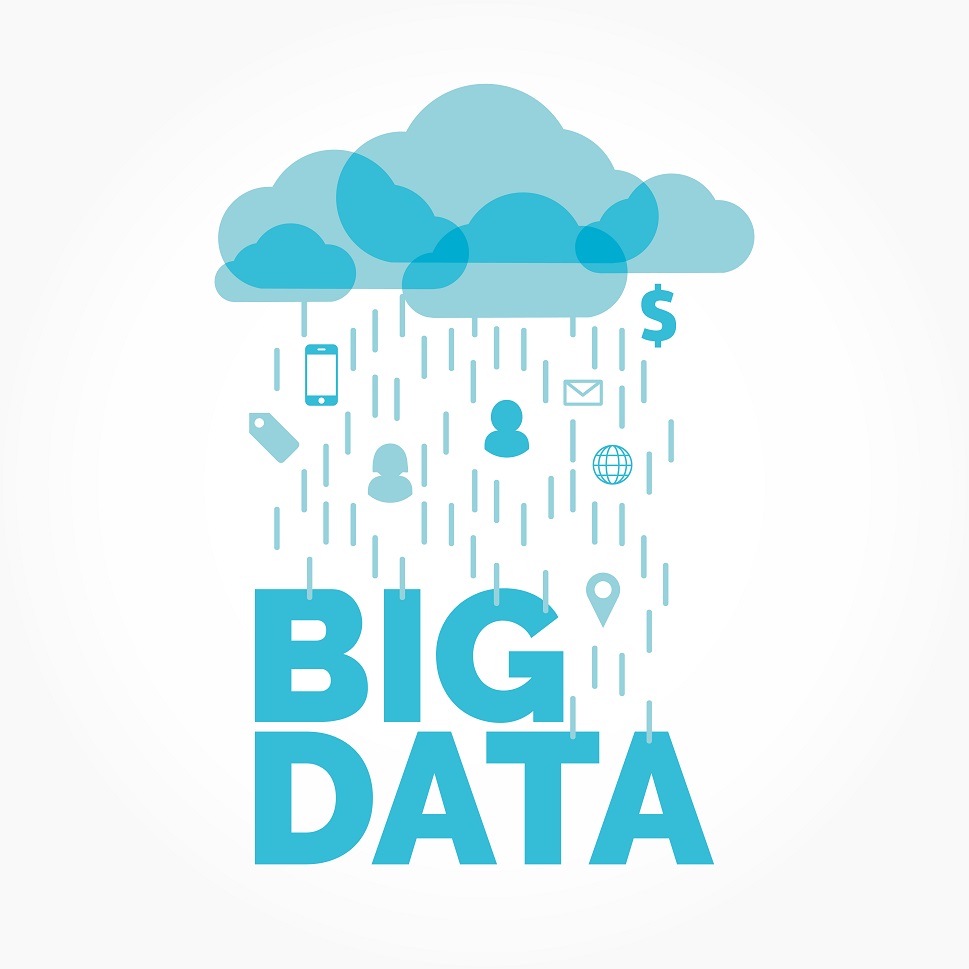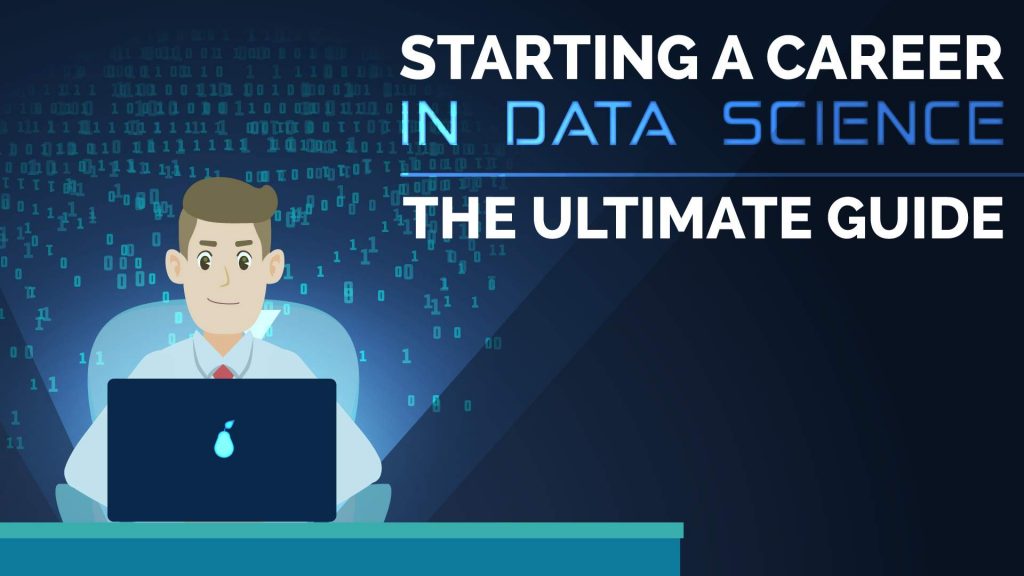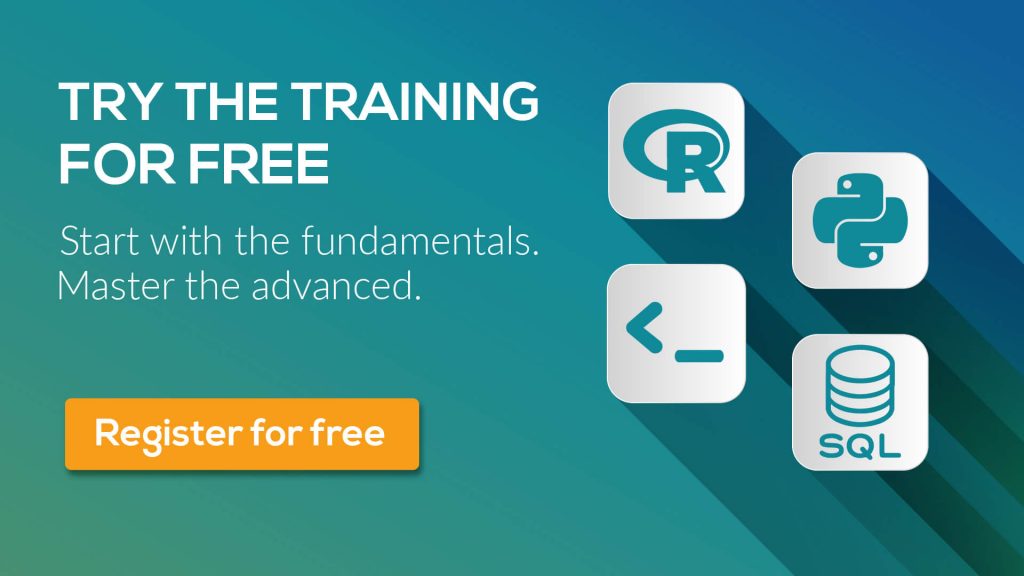https://365datascience.com/data-scientist-career-path/ -
The data scientist career path is probably the hottest career choice you can currently make. It is not only the $108,000 median base salary that makes the position appealing to job seekers, data science also hits high on satisfaction with a score of 4.2 out of 5, as findings from the latest Glassdoor report reveal.
Big data is the new oil

You are now probably asking yourself: “Okay, cool. But how do I get a job in data science?”. And you are certainly not the only one. There is so much hype about big data. Organizations and individuals are “always on”, leaving digital traces for everything, all the time, everywhere. And someone needs to handle that information. In simple terms, data scientists set up the systems required to generate insights that can be gained from humongous volumes of data. Therefore, it does not come as a surprise that this is the black gold which fuels productivity, better decision-making, and profit gains. The data scientist career path is on the rise.
Data scientist is the sexiest job of the 21st century
Sounds overstated? Think again. A few years ago, The Harvard Business Review (HBR) hailed ‘data scientist’ as the sexiest job position. People with the skills and curiosity to find meaning from swimming in data are an object of desire for many industries including finance, retail, and e-commerce.
The HBR’s juicy title is still spot-on. IBM predicts an explosion in the demand for data scientists, with more than 300,000 job openings on the US labor market by 2020. As HBR gurus put it, “if ‘sexy’ means having rare qualities that are in high demand, data scientists are already there.”
Sounds amazing! But what does a data scientist do?
“That word. ‘Sexy.’ What does it mean?
It means loving someone you don’t know.”
– Jhumpha Lahiri
As the novelist Jhumpha Lahiri puts it, there is a great deal of mystery in that word: “sexy”. Do we really know who data scientists are, where they come from, and what they do? ‘Data scientist’ is a loose term, and it is therefore not surprising that you are struggling to find the right career track. A data scientist job implies some statistics and modeling knowledge, combined with programming skills, that ultimately result in actionable insights for businesses.
Author’s note: If you are interested in learning more about the data science field and the career opportunities it offers, you can do that by downloading our free data science career guide)
To reach those insights, data scientists need a unique blend of rare qualifications. But don’t be discouraged. We will show you how to choose the right data scientist career path, which will enable you to remain focused, to leverage your strengths, and to develop only the specific skills needed to match the roles you want.
Eager to find the right data scientist career path?
We offer you a data science survival guide. In this article, we will navigate your way through the pool of data science job opportunities. We will show you the data science pipeline, or the sequence of events that gets a project up and running. A real-life case study on Heineken comes in handy when explaining the different job roles in a data science team. In the end, you will be equipped with actionable tips about what you can do right now to become a data scientist.
The data science pipeline
Any data science project is a process; understanding this fact is important if you want to find your way through the data science maze.

Data science is not magic!
It is about going through a sequence of steps in a systematic manner.
First, come the project objectives. Have you identified a business issue or an attractive market opportunity? You need to be clear about what you are trying to accomplish in order to help your company gain a competitive edge.
Then, you need to figure out where to collect data from, to plan resources, and to coordinate people to get the job done.
Part three is data preparation. Data needs to be carefully cleaned and explored. Associations will start to emerge; the sample and the variables will be refined. Then, comes the creation of models, their validation, evaluation, and potential refinement.
Finally, you need to communicate the team’s experiences during the data science process. Data needs to take a compelling form and structure. At the final reporting stage, visualizations are necessary to tell the full story.
So, what did you learn?
Roles in a data science team aren’t exclusively technical. While programming and statistics are needed for the core stages of the process, contextual skills are essential for the planning and reporting stages.
Roles in data science
Indeed, the data scientist role is a crossover between many different disciplines. Data scientists are multi-talented professionals, who can see the big picture, while also being programmers, statisticians, and good data storytellers.
However, in a data science team, there are people with diverse roles, and they all contribute in different ways. If the data scientist career path is the ultimate goal, there are various ways you can get there.

Data analysts, for example, are more involved in day-to-day tasks, focused on gathering data, structuring databases, creating and running models, trend analysis, making recommendations, and storytelling.
Business intelligence (BI) analysts, on the other hand, should be able to see the big picture, situate the business unit in the market, having considered its trends. Normally, BI analysts have expertise in business, management, economics or a similar field. However, they must also “speak data”. BI analysts work with tons of information, and spend most of their time analyzing and visualizing the data they have gathered from multiple sources.
Are you fascinated by marketing problems? The marketing analyst is a special kind of data analyst. However, they are not that involved in programming and machine learning, as their core strength lies in analyzing consumer behavior data through specialized software.
Heineken case study
Let’s look at an example to show the synergy in a real-life data science team.

The beer giant Heineken spotted an opportunity.
Traditionally, beer is not very well positioned in restaurants, because it is not the typical drink that goes well with food. Wine takes the lead there as it pairs with basically everything, from steak to pasta. Therefore, selling more beer by creating the perfect beer-food combinations is a genius solution!
Who do you think looked at wine data and spotted industry trends to suggest growth directions for Heineken? Sounds like the job for a BI analyst!
After the attractive market opportunity was identified, Heineken were ready for action.
Data science in action
To find beer-food combos, Heineken leveraged data science. Teamwork is essential for a project as complex as this one. Data scientists were indeed on top of the process, sifting through huge quantities of data to find insights for Heineken.
And it was data scientists who suggested the smart solution to run machine learning checks on beer and food molecules. Creating a beer with the right molecules to perfectly fit the ingredients of a market’s most popular meal would be both mouth-watering and money-making. Imagine the perfect match between beer molecules and best-sellers such as a burger or chicken tikka masala!
Then, empirical data from beer lovers was collected. At this stage, marketing analysts were needed to create the research design and gather consumer data that could be later used for marketing planning.
919 citizens of Paris and New York sampled various beer-food pairs. As an interesting aside, for some participants, the gourmet experience took place in nice bistros, whereas others were offered virtual reality gear to mimic the context.
Data analysts offered a helping hand in the cleaning and preprocessing of data collected during the bistro sessions. Statistical analyses were performed, and findings were visualized.
Care to find out what the Heineken’s BFFs are?
Both machine learning checks and French respondents reported that beer with pate is a killer combination! Findings also confirmed the suitability of the beer/cheesecake combo, so consider trying that as well. Not as visual and compelling as a data scientist’s presentation, but still interesting enough.
What conclusions can we draw?
We used a real-life project to demonstrate that data science research is dynamic and multi-dimensional. This is why it requires the expertise of many, many people. They will have different job titles, knowledge, skills, and experience, which will ultimately result in truly valuable insights from a business perspective.
What is the right data scientist career path for you?

Are you now allured by any of these roles? If yes, good for you, as each of these career paths will help you to gain the valuable skills needed. Work hard and eventually, you will land a data scientist job. (We don’t like repeating ourselves, but make sure you go through our career guide before making any career decisions and embarking on a career path)
In this section, we will take a closer look at the key roles in a data science team.
The data analyst path
There is a joke circulating on Twitter saying that “A data scientist is a data analyst who lives in California”. While there is certainly an overlap, there are crucial differences between the two roles. Data scientists essentially see the bigger picture. Their multifaceted skills see them through the whole data science process. On the other hand, the efforts of data analysts are far more concentrated, they have a specific goal in mind, normally assigned to them by the data scientists. Therefore, data analysts need a narrower skill set to perform their daily work.
Most notably though, it takes a long time to reach the top of the ladder, where data scientists are normally positioned. Working your way up isn’t easy, or quick, but becoming a data analyst is a great starting point.
A data analyst is in charge of scrutinizing information using analytical tools and programming languages. Ultimately, they should produce meaningful results extracted from raw data, but it is the management that makes the decisions about what to do with those results.
The key responsibilities of a data analyst are data cleaning and maintenance, programming and analysis, and presentation of findings. Therefore, knowledge of business and strategy is not in the forefront. The job is actually quite technical, but that’s where its strength lies. To develop the data scientist intuition, you must be very well prepared on the technical side.
Care to get more insights from a real-life data analyst? Check out our interview with Ina.
Skills needed
The top skills necessary for this position are Microsoft Excel, market research, advanced statistics, and SQL. In addition, you’ll also need visualization tools like Tableau, and at least one programming language, such as R and/or Python.
That said, if you want to learn everything there is to know about Python, check out our super comprehensive Python programming guide.
The business intelligence (BI) analyst path
In simple terms, business intelligence digests corporate data to provide actionable information. There are two main skill sets needed for a BI job: business, and data. A BI analyst understands the functions of a business well. However, they can also perform technical tasks, including data mining, modeling data, and data analysis.
A BI analyst also looks at competitors’ data and business trends to figure out how their own company can improve its competitive positioning. It is through their multilayered preparation that they manage to find and understand patterns and trends in large chunks of data.
Skills needed
You should be extremely familiar with Microsoft Excel, market research, basic statistics, and Tableau. Valuable additions are SQL and a programming language like R or Python.
The marketing analyst path
Marketing analysts spend most of their time trying to enhance the marketing mix while making comparisons between past and current market data.
If you pursue the marketing analyst track, you are required to have in-depth knowledge of fundamental marketing concepts, such as strategy and planning, marketing research, and campaign management.
But that’s not the whole story. In today’s world, tech skills are also essential in managing digital campaigns, including mastery of Google products, such as AdWords and Analytics.
And last but not least, the basics of statistics are a must for any analyst. A marketing analyst must be able to design and monitor metrics, then visualize them, and prepare reports.
Skills needed
The responsibilities of a marketing analyst may vary, but 95% of the time, you will be using one of these five areas of expertise: Microsoft Excel, market research, basic statistics or digital marketing. While not essential, some knowledge of Tableau will considerably increase your chances of landing the job.
Action plan
Are you now drawn by the tremendous opportunities that each data scientist career path offers? It is not a straightforward task to figure out what you should focus on in order to land a data scientist position. Nevertheless, learning more about the various roles in data science is the very first step to career success.
If you are looking for smart and affordable ways to boost your employability in data science, here is a list of five actionable steps:
1) Check out the 365 Data Science Career Guide (third invitiation is the last one)
It offers a comprehensive overview of the most popular paths you can take to end up in a data science position. Just subscribe in the form here and the career guide pdf will be sent to you FREE.
2) Join data science groups and follow influencers
Joining groups on LinkedIn is a cheap and effective way to stay up-to-date and maintain relationships with data science fellows. Moreover, many data scientists have taken to Twitter to share know-how, so make sure you are following the influencers.
3) Build up a public portfolio of data science projects
Even if you are new to tech, you can start building a portfolio of simple, yet interesting works. It’s an opportunity to create a personal brand with great potential for future growth in the data scientist career path. A great platform on which to showcase your work is Github; you can also create a website.
4) Take online courses
Did you know that your resume will be discarded if you don’t include at least 75% of the desired qualifications? Gee, thanks, electronic screening systems. If you want to make sure that your resume will beat the bot, you need to boost your skill set. Perhaps the most effective and least costly way is to enroll in courses that develop hot skills like Python, SQL, R, Tableau, and machine learning. Get started with our explainer videos to give you a hint at our teaching style.
5) Define your target employers
Once you are clear about your desired data scientist career path, figure out who you are targeting.
Data science is not ‘one size fits all’
Data science is not just for big companies. Every business generates data, be it a multinational giant or the local street corner market. While not every company can afford a full-stack data science team, small firms also need capable analysts. Ask yourself this: ‘Do I see myself in a small firm or am I more attracted to big players?’ Then create a list of target organizations, and start following them on social media.
If you liked this article, then you will definitely love our article in which we compare terms like Data Science, Machine Learning, Data Analytics, and Business Analytics. Make sure you check it out!
Ready to take the first step towards a career in data science?
Check out the complete Data Science Program today. We also offer a free preview version of the Data Science Program. You’ll receive 12 hours of beginner to advanced content for free. It’s a great way to see if the program is right for you.
#Career, #Interview
#365datascience #DataScience #data #science #365datascience #BigData #tutorial #infographic #career #salary #education #howto #scientist #engineer #course #engineer #MachineLearning #machine #learning #certificate #udemy


No comments:
Post a Comment